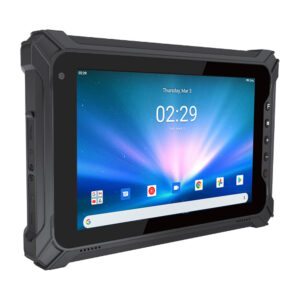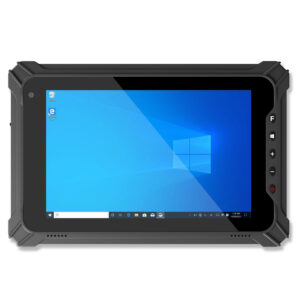For all the dramatic innovations in technology, there remains a cliché that is as accurate today as it was a century ago – “It Pays To Have the Right Tool for the Job.”
Digital change and mobility enable employees to be accessible, responsive, hyper-productive, data-driven, and do more with fewer resources. While mobile devices have become critical to corporate productivity, off-the-shelf consumer products often don’t hold-up to harsh work environments.
If you’re in the field, on the factory floor, doing rounds in a hospital, or in other challenging work environments, you’re probably using a tablet for your job. Minno knows that in “real world” work environments, devices are tossed, dropped, and shaken. They sit in hot and cold cars and they have to operate in dusty, wet, and exposed environments.
Rugged tablets are one of the fastest growing segments of the mobile device industry because they offer powerful functionality in a highly portable, tough form, made to withstand hard use and harsh environments.
Rugged devices are more expensive than consumer products at face value, but the costs of replacement hardware and technology failures in the workplace are easily underestimated.

Don’t Settle For Ruggedized When You Need Rugged
For businesses that want to equip their workforce with the latest edge computing technology, there is a temptation to save a few dollars by putting rugged cases on consumer tablets. But a rugged tablet isn’t the same as some poser in a beefy case!
Many case and tablet manufacturers use terms like “dust and water resistant.” But do those terms really mean anything? Those devices may resist dust or moisture in certain conditions, but how much, and for how long? If a device manufacturer says it’s “drop resistant,” how high was it dropped from, how many times, and on what surfaces? Devices might say they’re for use in extreme temperatures, but how cold or hot can they really get?
It pays to look at the specs and understand how rugged devices are tested and certified. Testing can mean the difference between a reliable, survivable device and one that fails when you need it most. Minno tablets are designed to be tough from the inside out, with solid-state components, and thoughtful engineering. They are designed for survivability under hard-use and exposure, backed by independent certification testing and a solid warranty. That’s why Minno has become the “go-to” solution for dependable, rugged tablets and accessories.

Can You Take the Heat …and Cold?
There’s no denying that temperature extremes pose a real challenge for mobile electronics. Most consumer-grade tablets use components, case materials, seals and insulation, screens and chargers that won’t withstand temperatures below freezing, or exceeding 100°F. A few days in the field and their technology performs like a brick.
Crews working in below-freezing temperatures battle battery problems; sleet and snow can expand gaps and fog-up screens, or crack glass. Workers in sunny, hot environments experience device shutdowns due to overheating, frustrating screen glare and even damage from melting cases.
One common problem related to working in temperature extremes is condensation that occurs when moist, hot air hits a cold surface. Condensation can make screens and barcode readers useless. Workers that go in and out of cold often experience condensation build-up on the screen, that turns to frost in cold, making the touch screen unusable. Condensation is more problematic when it builds behind the screen. Workers in tropical climates know that humidity and moisture easily penetrate unprotected hardware and cause short-circuits and corrosion, which permanently damage the device.
In desert climates, consumer devices tend to rapidly overheat and shutdown, causing costly delays and business disruption. It’s difficult to read a screen in direct sunshine without the anti-glare and high illumination that makes a screen sunlight-readable like those built into high-quality rugged devices.
The Inside Info on Ingress
Most rugged tablets are tested for an IP rating, two numbers which show its level of “Ingress Protection,” or its ability to prevent particulate and liquid from entering and damaging the device.
The first digit of the IP rating refers to its protection against the ingress of particles on a scale of 0 to 6. A device rated “6” means it is protected from even fine dust. The second number of the IP rating is the amount of liquid exposure a device can resist on a scale of 0-9. Here are common IP ratings and what they mean.
- IP6X: Dust-safe but not tested for water protection.
- IP65: Dust-protected, and able to resist light jets of water but not submerged.
- IP67: Safe from dust and can go underwater up to 1 meter for half an hour.
- IP68: Same as the IP67 except it can survive submersion in water, under pressure for long periods.
A device rated IP67 is tested to be both “dust-tight” and to survive being submerged 3 feet below water for half an hour. When it comes to moisture and your device, it’s possible for seals to break down overtime, especially in salt water, so take the device IP rating as guidance – not a guarantee – and exercise reasonable caution.


Dust Kills – Make Sure Your Device is Protected
Tablets on the construction site, plant floor, warehouse, or delivery vehicle, mean that one of your most important workplace tools is threatened by dust and grit. Dust clogs charging ports, microphones and speakers, and enters keyboards. Over time it diminishes the functionality of your tablet. Minno rugged tablets, have an IP6 rating, meaning they are dustproof. The ports are shielded against the ingress of fine particles and screens are toughened to minimize scratches from particulate striking or rubbing against the glass.

How Well Does Your Device Drop and Roll?
Even in an office environment, mobile devices occasionally get dropped. Once those devices go out into the field, or into more industrial settings, they are often tossed and thrown and the occurrence of droppage goes way up. So, it pays to buy a tough device that will keep working, and protect the valuable information it contains. First choose a rugged device, tested for survivability and durability. Minno tablets have MIL-STD-810G certification, which indicates the tablets have been tested to some of the highest standards of the US Department of Defense and are certified as safe and reliable. Those tests include a 4-foot drop, 26 faces drop (dropped on all sides/angles), shock and vibration tests, as well as other extreme environmental tests. Most devices are tumble-tested for durability in real world situations. One key difference between a tablet with a rugged case and a “rugged tablet” is that a rugged tablet is built tough from the inside out. A rugged case might cut down on nicks and dents and cracked glass, but the shock of a fall can damage standard internal systems. In a rugged tablet those systems are hardened to help devices withstand the shocks that can occur in challenging work environments.

Minno stands for Mobile Innovation and Value
Minno is a privately held manufacturer of full-featured, high-performance rugged tablets (Android and Windows) and custom-designed or branded tablets for industry, education, and governments sold B2B in volume at prices well below retail brands. Minno rugged tablets are designed for high performance, durability, reliability, and versatility. Our tablets will change how your business operates and deliver value to customers by delivering productivity, efficiency, and business agility.




